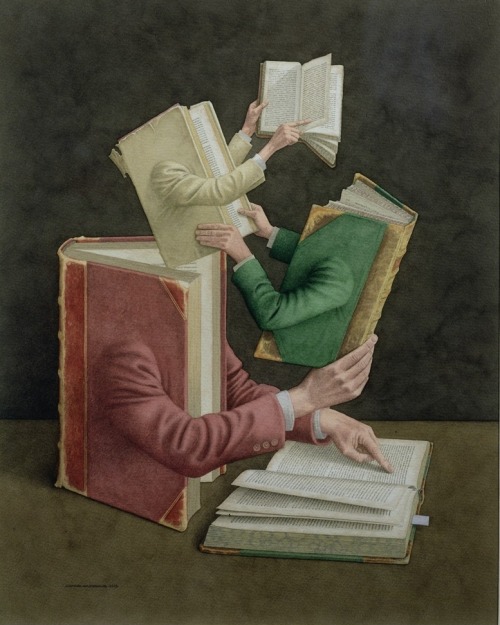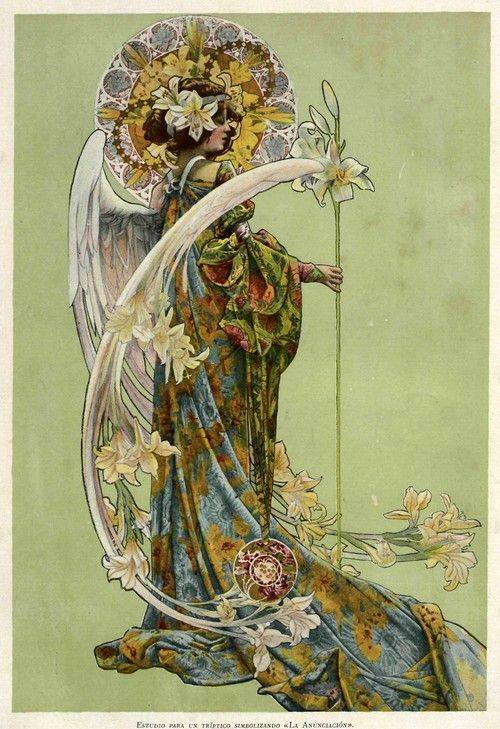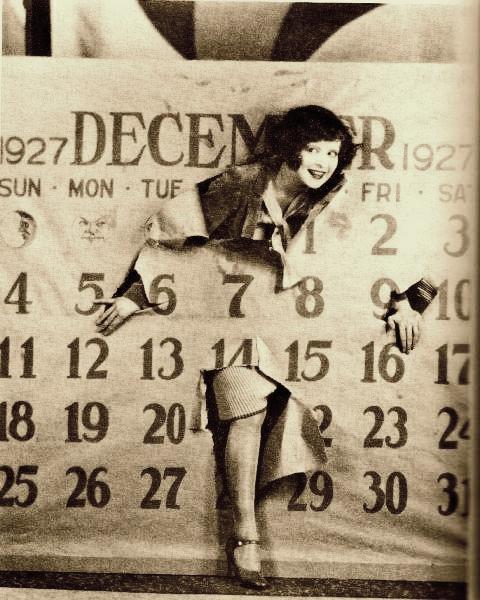Monday, April 28, 2014
TED TALKS: Elizabeth Gilbert on Creativity
Elizabeth Gilbert: Your elusive creative genius: Click Here
Elizabeth Gilbert: Success, failure and the drive to keep creating: Click Here
Respond to one of the following Quotes:
“Every one of my books had killed me a little more.” ― Norman Mailer
“Writing books is the closest men ever come to childbearing.”― Norman Mailer
Six Must See TED Talks from 2013: Click Here
Now, Start Scribbling!
Happy Writing!
The Writing Whispererings
Believe In Truth, Beauty, Freedom, Love, and the Power of the Written Word!
Believe In Truth, Beauty, Freedom, Love, and the Power of the Written Word!
Labels:
Creativity,
Elizabeth Gilbert,
TED TALKS
Friday, April 25, 2014
StoryCorp "Titanic" Catastrophe
Always a Family: Click Here
She was the One: Click Here
QUESTIONS:
- What do you think the story will be about based on the title.
- Write your reaction to the video
- How does this catastrophe relate to the Titanic?
- What is the main ides of the story?
- Write a short summary of the story.
- Create another good title for this story.
Article about StoryCorps: Click Here
Now, Start Scribbling!
Happy Writing!
The Writing Whisperings
Believe In Truth, Beauty, Freedom, Love, and the Power of the Written Word!
Believe In Truth, Beauty, Freedom, Love, and the Power of the Written Word!
Labels:
Always a Family,
She was the One,
StoryCorp
Tuesday, April 22, 2014
StoryCorp-Main Idea Versus Summary
Facundo the Great: Click Here
Family Man: Click Here
QUESTIONS:
- Predict what the story will be about based on the title.
- What is the main ides of the story?
- Write a short summary of the story.
- Create another good title for this story.
Article about StoryCorps: Click Here
Now, Start Scribbling!
Happy Writing!
The Writing Whisperings
Believe In Truth, Beauty, Freedom, Love, and the Power of the Written Word!
Believe In Truth, Beauty, Freedom, Love, and the Power of the Written Word!
Labels:
Facundo the Great,
Family Man,
NPR,
SOL Review,
Storycorps
Monday, January 27, 2014
Journey by Aaron Becker
After viewing the book trailer, share where will you journey through the magic of your imagination!
Now, take a journey using the book by Aaron Becker entitled Journey and see if you can put words to the pictures he created to tell the story.
Now, Start Scribbling!
Happy Writing!
The Writer Whisperer
Believe In Truth, Beauty, Freedom, Love, and the Power of the Written Word!
Believe In Truth, Beauty, Freedom, Love, and the Power of the Written Word!
Wednesday, January 15, 2014
Persuasive Techniques
Bandwagon. Many ads show lots of people using the product, implying that "everyone is doing it" (or at least, "all the cool people are doing it"). No one likes to be left out or left behind, and these ads urge us to "jump on the bandwagon.” Politicians use the same technique when they say, "The American people want..." How do they know?
Testimonials. Media messages often show people testifying about the value or quality of a product, or endorsing an idea. They can be experts, celebrities, or plain folks. We tend to believe them because they appear to be a neutral third party (a pop star, for example, not the lipstick maker, or a community member instead of the politician running for office.) This technique works best when it seems like the person “testifying” is doing so because they genuinely like the product or agree with the idea. Some testimonials may be less effective when we recognize that the person is getting paid to endorse the product.
Repetition. Advertisers use repetition in two ways: Within an ad or advocacy message, words, sounds or images may be repeated to reinforce the main point. And the message itself (a TV commercial, a billboard, a website banner ad) may be displayed many times. Even unpleasant ads and political slogans work if they are repeated enough to pound their message into our minds.
Plain folks. (A type of Testimonial – the opposite of Celebrities.) This technique works because we may believe a "regular person" more than an intellectual or a highly-paid celebrity. It’s often used to sell everyday products like laundry detergent because we can more easily see ourselves using the product, too. The plain folks technique strengthens the down-home, "authentic" image of products like pickup trucks and politicians. Unfortunately, most of the "plain folks" in ads are actually paid actors carefully selected because they look like "regular people.”
Glittering generalities. This is the use of so-called "virtue words" such as civilization, democracy, freedom, patriotism, motherhood, fatherhood, science, health, beauty, and love. Persuaders use these words in the hope that we will approve and accept their statements without examining the evidence. They hope that few people will ask whether it’s appropriate to invoke these concepts, while even fewer will ask what these concepts really mean.
Emotional Appeal: Make viewers feel certain emotions, such as excitement, sadness, or fear
Name-calling. This technique links a person or idea to a negative symbol (liar, creep, gossip, etc.). It’s the opposite of Glittering generalities. Persuaders use Name-calling to make us reject the person or the idea on the basis of the negative symbol, instead of looking at the available evidence. A subtler version of this technique is to use adjectives with negative connotations (extreme, passive, lazy, pushy, etc.) Ask yourself: Leaving out the name-calling, what are the merits of the idea itself?
Now, Start Scribbling!
Happy Writing!
The Writer Whisperer
Believe In Truth, Beauty, Freedom, Love, and the Power of the Written Word!
Believe In Truth, Beauty, Freedom, Love, and the Power of the Written Word!
EXAM REVIEW ANSWERS
Exam Review Answer Key: Click Here
Punctuation Rules for Titles: Click Here
Now, Start Scribbling!
Happy Writing!
The Writer Whisperer
Believe In Truth, Beauty, Freedom, Love, and the Power of the Written Word!
Believe In Truth, Beauty, Freedom, Love, and the Power of the Written Word!
Tuesday, January 14, 2014
Text Sturcture: 7 Types
Text Structure
Chronological Order
When information in a passage is organized by the time in which each event occurred, it is organized chronologically. Nonfiction passages that are organized chronologically often contains dates. Fiction passages or narratives are more subtle and are organized chronologically but usually have no dates. A narratives or story is a journey through time, and all of the events are arranged in order of time; therefore, every story has a beginning, middle, and end. Even if an author uses flashbacks, flash-forwards, or otherwise manipulates the time in his or her text, the events still occur along a timeline. Stories require the passage of time; therefore, all stories are organized chronologically. Sometimes time will stop in a narrative. Certain passages in a story may focus on describing scenary or spaces, and use a descriptive or spatail method of organization. The conflict of a story may be discussed in terms of problem and solution or cause and effect, but the text in a story is stillmainly organized chronologically.
Remember:Chrono = TimeLogic = OrderStories are told chronologically or in order of time.
Compare and Contrast
Compare and Contrast is a text structure or pattern of organization where the similarities and differences of two or more things are explored. It is important to remember that with the compare and contrast text structure the text should be discussing similarities and differences. If the text only discusses similarities, it is only comparing. Likewise, if it only discusses ways that the things are different, it is only contrasting. The text must do both to be considered compare and contrast.
Order of Importance
Ideas or steps are prioritized by the writer or speaker according to a hierarchy of value. When using the order of importance pattern of organization, information can be structured from most important to least important or least important to most important. Both structures would be considered as the order of importance text structure.
Sequence
Sequential order, or process writing as it is sometimes called, is when information in a passage is organized by the order in which it occurs. This method of organizing text is generally used for instructions or directions, but it can also be used to explain processes in nature or society, such as how a president is elected. Sequential organization is frequently confused with chronological order. To further confound the issue, sometimes people refer to chronological order as chronological sequence. But there is a key difference that distinguishes the two patterns: texts organized chronologically occur at a specific time and setting, whereas texts describing processes or sequences do not occur at any specific time and place. To elaborate, if I tell the story of how I came home and made cookies, that information is organized chronologically. The story took place in my kitchen sometime in the past. Alternately, consider instructions on how to make cookies. When did that occur? That could happen at anytime or no time at all. This is because a recipe describes a process or sequence, one which is not attached to any specific chronology.
Sequence: How to Make CookiesUnlike chronologically ordered texts, information organized sequentially does not occur at any specific time but, rather, anytime.
Signal Words: First, next, before, lastly, then
Spatial
Spatial organization is when information in a passage is organized in order of space or location. If you were to describe the room in which you were sitting right now, you would be using spatial organization. Spatial organization may also be called descriptive writing and it is most frequently used when the narrator describes how something looks. Spatial organization is generally pretty easy to identify, but be aware that spatial organization is used in both fiction and nonfiction texts. Most fictional passages are organized chronologically, but in paragraphs where the narrator is describing a setting or the appearance of a character, the information may be organized spatially.
Cause and Effect
Cause and effect is a common way to organize information in a text. Paragraphs structured as cause and effect explain reasons why something happened or the effects of something. These paragraphs can be ordered as causes and effects or as effects and then causes. The cause and effect text structure is generally used in expository and persuasive writing modes.To put it another way: when an author gives reasons why something happened, he or she is explaining what caused an effect (reasons are causes and the thing that happens is the effect). Also, when a writer explains the results of an action, he or she is explaining the effects of a cause (results are effects and the thing that occurs is the cause). The cause and effect text structure is used so commonly that you have probably written a paragraph using it and not noticed.
Problem and Solution
Problem and Solution is a pattern of organization where information in a passage is expressed as a dilemma or concerning issue (a problem) and something that was, can be, or should be done to remedy this issue (solution or attempted solution). The problem and solution text structure may seem like it would be easy to recognize, but it can be moderately difficult to identify because it is frequently confused with the cause and effect pattern of organization, as they both have relational structures; however, if you read the passage and look specifically for both a problem and a solution to the problem, you should find it pretty easy to distinguish from cause and effect, as cause and effect passages do not propose solutions to any negative occurrences within the passage but rather just explain why or how they happen.
Links to Worksheets
Now, Start Scribbling!
Happy Writing!
The Writer Whisperer
Believe In Truth, Beauty, Freedom, Love, and the Power of the Written Word!
Believe In Truth, Beauty, Freedom, Love, and the Power of the Written Word!
Labels:
E Reading Worksheets,
Text Structure
Tuesday, January 7, 2014
GRIT: TED VIDEO

Respond to the following Quote:
“What matters most in a child's development, they say, is not how much information we can stuff into her brain in the first few years. What matters, instead, is whether we are able to help her develop a very different set of qualities, a list that includes persistence, self-control, curiosity, conscientiousness, grit and self-confidence.” ― Paul Tough, How Children Succeed: Grit, Curiosity, and the Hidden Power of Character
Six Must See TED Talks from 2013: Click Here
Now, Start Scribbling!
Happy Writing!
The Writer Whisperer
Believe In Truth, Beauty, Freedom, Love, and the Power of the Written Word!
Believe In Truth, Beauty, Freedom, Love, and the Power of the Written Word!
Monday, January 6, 2014
New Year Tradition: One Little Word

A single word can be a powerful thing. It can be the ripple in the pond that changes everything. It can be sharp and biting or rich and soft and slow. From my own personal experience, it can be a catalyst, an event that quickly causes change or action, for enriching your life.
In 2014, I want to begin a tradition of choosing one word for myself each January—a word that I can focus on, meditate on, and reflect upon as I go about my daily life. I considered words such as peace, vitality, and nurture, but decided on BECOMING. I want this word to become a part of my life in one way or another, in other words, I want this word to be my catalyst. I want it embedded into who I am, and into who I'm becoming. I hope this word will help me to breathe deeper, to see clearer and to grow.
I also want my students to do the same. Here is how you, my students, will accomplish this task;
Now, it is your turn, watch the video and listen to the word list, and then chose your word for 2014!
One Little Word Introductory Video: Click Here
One Little Word List: Click Here
Remember, after viewing the video and listening to the word list, pick your word for the year. Write it on your card and explain why you chose that word.
Now, Start Scribbling!

Happy Writing!
Happy Writing!
The Writer Whisperer
Believe In Truth, Beauty, Freedom, Love, and the Power of the Written Word!
Believe In Truth, Beauty, Freedom, Love, and the Power of the Written Word!
Labels:
New Year,
One Little Word,
Tradition
January 2014: A Picture Can Inspire 1,000 Words
1. After looking closely at the image above (or at the full-size image), think about these three questions:
- What’s going on in this picture?
- What do you see that makes you say that?
- What more can you find?
Learn More About the Image: Click Here
HAPPY NEW YEAR!
Now, Start Scribbling!
Happy Writing!
The Writer Whisperer
Believe In Truth, Beauty, Freedom, Love, and the Power of the Written Word!
Believe In Truth, Beauty, Freedom, Love, and the Power of the Written Word!
Labels:
000 Words,
A Picture Can Inspire 1,
Photo,
The New York Times,
What’s Going On in This Picture?
Wednesday, January 1, 2014
Happy New Year!
"I think in terms of the day's resolutions, not the years'."-Henry Moore
Happy New Year!
From,
The Writing Whisperer
“Good resolutions are useless attempts to interfere with scientific laws. Their origin is pure vanity. Their result is absolutely nil.”-The Picture of Dorian Gray
Now, Start Scribbling!
Happy Writing!
The Writer Whisperer
Believe In Truth, Beauty, Freedom, Love, and the Power of the Written Word!
Believe In Truth, Beauty, Freedom, Love, and the Power of the Written Word!
!
Subscribe to:
Comments (Atom)





